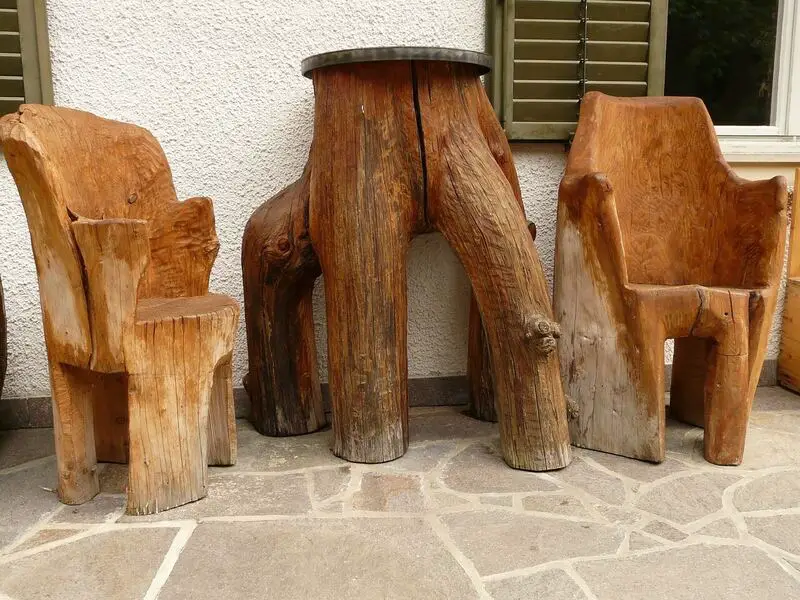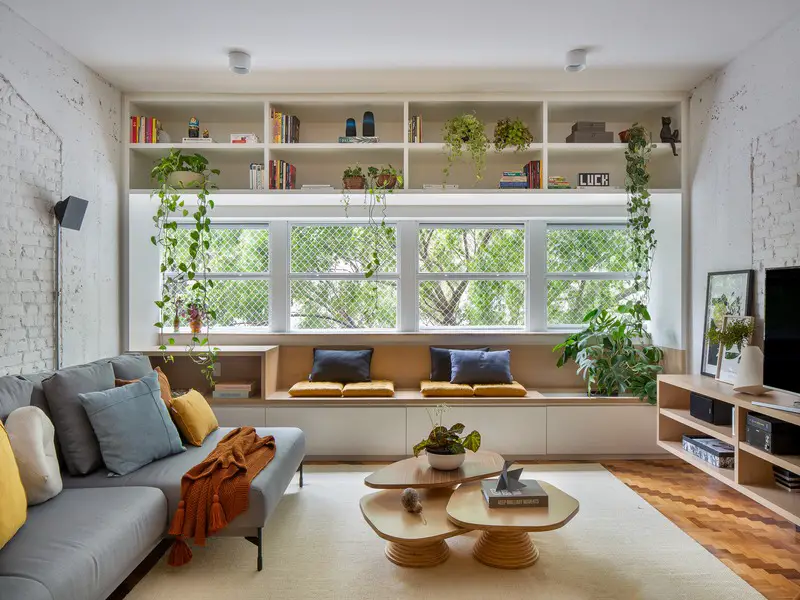If you are looking for ways to decorate your home with natural materials, wood is a great choice. Wood can be used to add warmth, texture, and character to any space. However, decorating with wood can be tricky if you don’t know how to do it right. In this article, we will give you 5 tips for decorating your home with wood.
Tip #1: Choose the Right Type of Wood
When it comes to decorating with wood, it’s important to choose the right type of wood for your project. Different types of wood have different characteristics that can affect their appearance, durability, and suitability for different applications.
What to Consider When Choosing Wood for Decoration
When choosing wood for decoration, consider the following factors:
- Grain pattern: The grain pattern of the wood can affect its appearance and texture. Some woods have straight, uniform grains, while others have more irregular or distinctive patterns.
- Color: The natural color of the wood can range from light to dark, and can also be affected by the type of finish applied.
- Durability: Some types of wood are more durable and resistant to wear and tear than others. This can be important if you are using wood for high-traffic areas or outdoor applications.
- Sustainability: If you are concerned about the environmental impact of your decor choices, look for wood that is sustainably sourced and certified by organizations such as the Forest Stewardship Council (FSC).

Popular Types of Wood for Home Decoration
Some popular types of wood for home decoration include:
- Oak: Oak is a durable hardwood with a prominent grain pattern that can add warmth and character to any space. It is commonly used for furniture, flooring, and cabinetry.
- Pine: Pine is a softwood with a light, knotty appearance that can give a space a rustic or country feel. It is often used for paneling, trim, and furniture.
- Walnut: Walnut is a dark, rich hardwood with a distinctive grain pattern that can add elegance and sophistication to a room. It is commonly used for furniture, flooring, and cabinetry.
- Maple: Maple is a hard, light-colored hardwood with a subtle grain pattern that can give a space a clean, modern look. It is often used for flooring, cabinetry, and furniture.
Tip #2: Mix and Match Different Wood Finishes
Mixing and matching different wood finishes can add depth and visual interest to a space.
How to Mix and Match Wood Finishes
When mixing and matching different wood finishes, it’s important to create a sense of cohesion and balance. Here are some tips to keep in mind:
- Stick to a color scheme: Choose a color scheme for your space and select wood finishes that complement or contrast with those colors. For example, if you have a neutral color scheme, you might choose a warm, reddish-brown finish for your wood accents.
- Vary the texture: Mixing different textures can help create visual interest and prevent the space from feeling too uniform. For example, you might pair a rough-hewn, rustic wood table with smooth, polished wood floors.
- Balance light and dark: Use light and dark finishes in equal measure to create a sense of balance and contrast. For example, you might pair a dark, espresso-finished coffee table with light, natural-finished wood chairs.
- Consider the scale: Make sure the size and scale of the wood pieces you are mixing and matching are appropriate for the space. For example, you wouldn’t want to pair a large, chunky wood dining table with delicate, slender wood chairs.
Examples of Successful Wood Finish Combinations
Here are some examples of successful wood finish combinations:
- Dark and light: A dark, espresso-finished wood coffee table paired with light, natural-finished wood accent chairs.
- Contrasting colors: A warm, reddish-brown finished wood accent wall paired with cool, gray-toned wood floors.
- Mixed textures: A rough-hewn, rustic wood dining table paired with smooth, polished wood floors and sleek, modern wood chairs.
Tip #3: Incorporate Wood Accents
In addition to furniture and flooring, there are many other ways to incorporate wood into your home decor. Wood accents can add texture, warmth, and visual interest to a space. Here are some types of wood accents to consider:
- Wall decor: Hang wooden art pieces, framed prints or posters on the walls.
- Shelving: Install wooden shelves or bookcases to display books or decorative objects.
- Light fixtures: Choose a light fixture with a wooden shade or base to add texture and warmth.
- Mirrors: Add a wooden frame to a mirror for a rustic, natural look.
- Storage: Use wooden crates or baskets for storage solutions.
Where to Place Wood Accents in Your Home
When incorporating wood accents into your home, consider placing them in the following areas:
- Living room: Add wooden accent chairs, coffee tables, or side tables.
- Bedroom: Use wooden dressers, nightstands, or bed frames to add warmth and texture to the space.
- Kitchen: Incorporate wooden cutting boards, utensils, or barstools.
- Bathroom: Add wooden shelving, soap dishes or toothbrush holders.
Tip #4: Use Wood in Unexpected Ways
In addition to the traditional uses of wood in furniture and flooring, there are many creative ways to incorporate wood into your home decor. Here are some examples:
Examples of Unexpected Wood Applications
- Ceilings: Install wooden beams or planks on the ceiling to add warmth and texture to the space.
- Backsplashes: Use wooden tiles or panels for a unique and unexpected backsplash in the kitchen or bathroom.
- Headboards: Create a one-of-a-kind headboard by using a reclaimed wood door or panel.
- Room dividers: Use wooden slats or panels to create a room divider that doubles as a piece of art.
- Accent walls: Add a wooden accent wall to create a focal point in the room.
Creative Ways to Use Wood in Your Home
In addition to the examples above, here are some more creative ways to use wood in your home:
- Wooden planters: Add warmth and texture to your space by using wooden planters for your indoor plants.
- Wooden sculptures: Incorporate wooden sculptures or carvings into your decor for a unique and eye-catching element.
- Wooden frames: Display your artwork or family photos in wooden frames for a natural, rustic look.
- Wooden utensils: Use wooden utensils in your kitchen for a warm and earthy feel.
- Wooden accents in the bathroom: Add wooden towel bars, soap dishes, and tissue box covers to bring a natural element into your bathroom.
Tip #5: Maintain Your Wood Accents
Once you’ve incorporated wood into your home decor, it’s important to take care of it so that it lasts for years to come. Here are some tips for maintaining your wood accents:
- Dust regularly: Use a soft, dry cloth to dust your wood furniture and accents regularly.
- Avoid direct sunlight: Sunlight can cause wood to fade and dry out, so avoid placing your wood accents in direct sunlight if possible.
- Clean up spills promptly: Wipe up any spills or water marks on your wood furniture or accents as soon as possible to prevent damage.
- Use coasters: Use coasters or placemats under glasses and dishes to protect your wood tables and countertops.
- Condition and polish: Use a wood conditioner and polish to keep your wood furniture and accents looking their best.
Conclusion
Incorporating wood into your home decor can add warmth, texture, and visual interest to your space. By following these five tips, you can create a cohesive and balanced look while incorporating wood in unique and unexpected ways. Remember to mix and match wood finishes, incorporate wood accents, use wood in unexpected ways, and maintain your wood accents to ensure they last for years to come.




